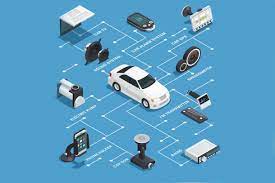Your Guide to Our Latest Technological Updates: What You Need to Know
Introduction
Technology is evolving at an unprecedented pace, redefining how we live, work, and interact with the world around us. Keeping up with the latest advancements can be overwhelming but necessary for businesses, professionals, and enthusiasts alike. In this comprehensive guide, we will delve into the most impactful technological updates, offering insights into their significance and how they can shape our future.
Chapter 1: Artificial Intelligence and Machine Learning
Artificial intelligence (AI) and machine learning (ML) are at the forefront of technological innovation, powering everything from virtual assistants to predictive analytics in business operations.
Key Updates in AI and ML
- Generative AI Models: The rise of generative AI tools like GPT-4 and DALL-E is transforming content creation, design, and problem-solving.
- Explainable AI: Focus on transparency and accountability in AI models to improve trust and usability.
- Edge AI: Implementation of AI algorithms directly on devices for faster decision-making without relying on cloud servers.
Applications
- Personalized customer experiences in retail.
- Advanced diagnostic tools in healthcare.
- Autonomous systems in transportation.
Chapter 2: Quantum Computing
Quantum computing is no longer a distant dream. With recent breakthroughs, quantum systems are edging closer to practical applications.
Milestones
- Quantum Supremacy: Achievements in performing calculations beyond classical computers.
- Hybrid Quantum-Classical Systems: Integration of quantum computing into existing classical systems.
- Error Correction: Advances in reducing quantum errors for more reliable computations.
Industries Impacted
- Cryptography: Enhancing or breaking encryption.
- Material Science: Discovering new compounds.
- Finance: Optimizing complex algorithms.
Chapter 3: Cloud Computing
Cloud computing continues to be a cornerstone of digital transformation, with new developments making it more secure, accessible, and powerful.
Trends
- Multi-Cloud Strategies: Leveraging multiple cloud providers to avoid vendor lock-in.
- Serverless Architecture: Simplifying application deployment.
- Sustainability Initiatives: Cloud providers prioritizing energy-efficient data centers.
Benefits
- Scalability for businesses of all sizes.
- Cost reduction through pay-as-you-go models.
- Enhanced collaboration with remote teams.
Chapter 4: Internet of Things (IoT)
The IoT ecosystem is growing, connecting devices and enabling smarter environments.
Notable Advances
- 5G Integration: Accelerating IoT adoption with high-speed connectivity.
- IoT Security: New protocols to protect interconnected devices.
- Wearable Tech: Innovations in health monitoring and fitness tracking.
Use Cases
- Smart homes: Energy efficiency and automation.
- Industrial IoT: Predictive maintenance in factories.
- Agriculture: Precision farming techniques.
Chapter 5: Blockchain and Web3
Blockchain technology is evolving beyond cryptocurrency, driving innovations in decentralized systems.
Developments
- Decentralized Finance (DeFi): Transforming banking and financial services.
- Non-Fungible Tokens (NFTs): Expanding to gaming and intellectual property.
- Interoperability: Connecting different blockchain networks seamlessly.
Potential Impact
- Greater transparency and accountability.
- Streamlined supply chains.
- Empowering creators in the digital economy.
Chapter 6: Cybersecurity
With technological advancements come new cybersecurity challenges. The stakes are higher than ever.
Emerging Threats
- Ransomware-as-a-Service: Cybercriminals offering tools for attacks.
- AI-Driven Threats: Using AI to create sophisticated attacks.
- Supply Chain Vulnerabilities: Targeting third-party vendors.
Defensive Strategies
- Zero Trust Architecture.
- Enhanced endpoint security.
- Cyber resilience through simulation training.
Chapter 7: Sustainable Technologies
Sustainability is becoming a driving force behind technological development.
Green Tech
- Renewable Energy Solutions: Solar, wind, and beyond.
- Circular Economy: Recycling and upcycling initiatives.
- Smart Grids: Optimizing energy distribution.
Corporate Responsibility
- Reducing carbon footprints with green IT practices.
- Eco-friendly manufacturing processes.
- Promoting sustainability in tech supply chains.
Conclusion
The technological landscape is dynamic, with innovations reshaping industries and daily life. Staying informed empowers individuals and organizations to leverage these advancements effectively. As we embrace the future, understanding these technologies is crucial for growth and adaptation.
This guide serves as a roadmap to navigate the ever-changing world of technology, ensuring you stay ahead in an era of constant transformation.



